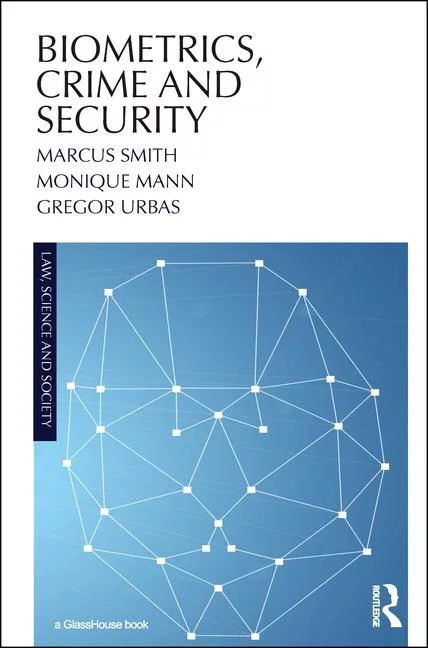Biometrics: Flexible and effective across different industries

Biometric devices provide unique advantages for security applications. For a long time, security solutions such as access control had only one option for evaluating access authorities: “Something you have,” in the form of a key. As technologies improved, keys became key cards, and programmable systems added enhanced functionalities like multiple door access, time of day limits, and so forth. But, despite these advancements, the system still relied upon something you had. Access codes and keypads, alone or in concert with cards, boosted security to include “something you know.” The problems with these systems remained because both cards and codes could be lost, forgotten, stolen, or passed along to others. Biometrics finally made the jump to “something you are” — and suddenly, it was no longer possible to lose, forget, or pass along your credentials.
Today, biometrics are in wide use for access control, where they are not only secure but also help lower disease transmission by reducing the need to touch common areas. Below are some examples of companies across various industries that have benefited from the many advantages of biometric systems.
Workforce Management
Fine Hygienic Holding (FHH) is one of the world’s leading Wellness Groups and a manufacturer of hygienic paper products. They were looking for a reliable biometric time and attendance solution that could support their workforce management objectives across many operating locations in multiple countries. This situation is common for companies that compete in global markets because management needs flexible, accurate systems that can keep up with daily activity levels and provide up-to-the-minute staffing information and status.
By upgrading to flexible, capable biometric readers powered using a single PoE connection, FHH got the accurate, frictionless time and attendance readers they needed, with time tracking and other data instantly available through a web-based, cloud-ready biometric software application. In addition, the biometric software was then integrated with FHH’s ORACLE enterprise human management system to share data supporting payroll with 100% accuracy. These modern biometric readers offer a selection of biometric identification modes, and staff members don’t need to keep track of any cards, tokens, or codes. On top of working wonderfully for FHH currently, the system has plenty of room to grow in the number of covered staff and further integration with other business and security systems.
Workforce Management With Health Screening
Companies can also gain health and safety benefits by upgrading to modern biometric systems. Orthoplastics, part of the Viant Corporation, is a world leader in developing and supplying implantable-grade and biocompatible plastics. They recently modernized their employee time tracking system by migrating from card-based time clocks to touchless face recognition, making the clocking in and out processes both faster and more accurate, while discontinuing the costly use of access cards that can be lost, stolen, or used by others.
Orthoplastics also implemented a new temperature screening process as part of their response to the COVID-19 pandemic. With stringent social distancing measures and abundant access to hand sanitizer and personal protective equipment at work, contactless temperature screening is a crucial element of Orthoplastics’s effort to protect individuals on site. As a manufacturer of essential medical plastics, Orthoplastics cannot shut down, but knew they had to take every step necessary to keep their employees healthy. Their company implemented this new health screening process simply by including an enhancement option on their advanced biometric readers, making installation and deployment simple.
Bolstering Security and Access Controls
Biometric technologies can also be excellent for access control applications. In addition to being faster and more effective than other older technologies, the use of multimodal biometric readers can set a higher standard for high-security situations. Advanced biometric readers offer two biometric modalities: facial recognition and a choice of fingerprint or finger vein recognition. World-leading biometric readers can also support the use of PINs and access cards in many formats — allowing a 4-factor authentication that redefines the meaning of “high security.”
Data centers require unique security solutions to ensure that their customers’ most critical assets are protected from theft. LightEdge, a premier provider of cloud and co-location services in the Midwestern United States, sought a biometric solution that matched the company’s high-level goals of security and futuristic design. They wanted to improve their security beyond their existing two-factor hand geometry and card reader units.
To do this, they replaced their legacy hand geometry readers with advanced two-factor biometric readers at multiple high-security data centers. They implemented a seamless transition by using their existing access control software in the interim. After two years of use, they remain satisfied with the system’s speed, performance, and aesthetics that match their high-tech operations.
Biometrics: Flexible and Effective
Biometric technology delivers benefits to companies that use the units for workforce management, health screening, access control — or any combination of these applications. With such a versatile, powerful technology, it is clear that cost-effective biometric systems can be effectively implemented in any industry. The only question left to ask yourself is, “How could advanced, multi-factor biometric readers benefit your organization?”
This article originally ran in Security, a twice-monthly security-focused eNewsletter for security end users, brought to you by Security Magazine. Subscribe here.
Looking for a reprint of this article?
From high-res PDFs to custom plaques, order your copy today!








